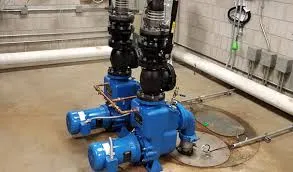English
- Afrikaans
- Albanian
- Amharic
- Arabic
- Armenian
- Azerbaijani
- Basque
- Belarusian
- Bengali
- Bosnian
- Bulgarian
- Catalan
- Cebuano
- Corsican
- Croatian
- Czech
- Danish
- Dutch
- English
- Esperanto
- Estonian
- Finnish
- French
- Frisian
- Galician
- Georgian
- German
- Greek
- Gujarati
- Haitian Creole
- hausa
- hawaiian
- Hebrew
- Hindi
- Miao
- Hungarian
- Icelandic
- igbo
- Indonesian
- irish
- Italian
- Japanese
- Javanese
- Kannada
- kazakh
- Khmer
- Rwandese
- Korean
- Kurdish
- Kyrgyz
- Lao
- Latin
- Latvian
- Lithuanian
- Luxembourgish
- Macedonian
- Malgashi
- Malay
- Malayalam
- Maltese
- Maori
- Marathi
- Mongolian
- Myanmar
- Nepali
- Norwegian
- Norwegian
- Occitan
- Pashto
- Persian
- Polish
- Portuguese
- Punjabi
- Romanian
- Russian
- Samoan
- Scottish Gaelic
- Serbian
- Sesotho
- Shona
- Sindhi
- Sinhala
- Slovak
- Slovenian
- Somali
- Spanish
- Sundanese
- Swahili
- Swedish
- Tagalog
- Tajik
- Tamil
- Tatar
- Telugu
- Thai
- Turkish
- Turkmen
- Ukrainian
- Urdu
- Uighur
- Uzbek
- Vietnamese
- Welsh
- Bantu
- Yiddish
- Yoruba
- Zulu
Telephone: +86 13120555503
Email: frank@cypump.com
Nov . 28, 2024 14:18 Back to list
Essential Components of Ejector Pumps for Efficient Performance and Maintenance
Understanding Ejector Pump Parts A Comprehensive Guide
Ejector pumps, also known as ejector systems or siphon pumps, are essential pieces of equipment in various industries, including wastewater management, chemical processing, and construction. Their primary function is to move fluids from one location to another, often overcoming gravitational resistance. To appreciate the efficiency and functionality of ejector pumps, it is crucial to understand the individual components that make up these systems. This article delves into the key parts of ejector pumps and their significance in ensuring successful fluid transfer.
1. Pump Housing
The pump housing is the outer casing that encases the internal components of the ejector pump. Typically made from durable materials such as cast iron or stainless steel, the housing provides structural integrity, protects against environmental damage, and supports the effective operation of the pump. The design of the housing can influence the flow characteristics and overall efficiency of the pump.
2. Impeller
The impeller is a critical component responsible for the movement of fluids within the ejector pump. It consists of angled blades that rotate to impart kinetic energy to the fluid, thereby creating flow. The design and material of the impeller can significantly affect pumping efficiency, capacity, and durability. Selecting the right impeller for specific fluid properties is vital in ensuring optimal performance.
3. Diffuser
Following the impeller, the diffuser plays a crucial role in converting the kinetic energy produced by the impeller into pressure energy. The diffuser is designed to slow down the fluid as it exits the impeller, allowing for an increase in pressure. This increase in pressure is essential for overcoming the system's resistance and facilitating the movement of fluids, particularly in vertical lift applications.
4. Motor
ejector pump parts

The motor is the driving force behind the ejector pump. It provides the necessary power to rotate the impeller and initiate fluid movement. Motors in ejector pump systems can be electric, hydraulic, or even powered by combustion engines, depending on the application and operational requirements. The choice of motor affects the pump's efficiency, operational cost, and suitability for specific environments.
5. Check Valve
A check valve is an important component that prevents backflow of the fluid once it has been pumped. By ensuring that the fluid only moves in one direction, the check valve helps maintain system pressure and prevents potential damage to the pump and associated piping. This part is particularly important in wastewater applications, where backflow can result in contamination and safety hazards.
6. Discharge Outlet
The discharge outlet is where the fluid exits the ejector pump and moves into the designated pipeline or storage system. The design and size of the discharge outlet are critical in determining the flow rate and efficiency of the pump. Proper sizing is necessary to prevent bottlenecks and maintain optimal system performance.
7. Control System
Modern ejector pumps often come equipped with advanced control systems that monitor and regulate operation. These systems can include features such as automatic shutoff, pressure monitoring, and remote operation capabilities. By incorporating a control system, operators can enhance the efficiency, safety, and reliability of their ejector pump operations.
Conclusion
Ejector pumps are indispensable tools for fluid management in various industries. By understanding the fundamental parts that comprise these systems, operators and engineers can make informed decisions regarding selection, maintenance, and operation. From the impeller to the discharge outlet, each component plays a vital role in ensuring that ejector pumps perform effectively and reliably, ultimately contributing to efficient fluid transfer and management processes. When correctly designed and maintained, ejector pumps can significantly enhance productivity and operational success across numerous applications.
-
Horizontal Split Case Pump with GPT-4 Turbo | High Efficiency
NewsAug.01,2025
-
ISG Series Pipeline Pump - Chi Yuan Pumps | High Efficiency, Durable Design
NewsAug.01,2025
-
Advanced Flue Gas Desulfurization Pump with GPT-4 Turbo | Durable & Efficient
NewsJul.31,2025
-
ISG Series Vertical Pipeline Pump - Chi Yuan Pumps | Advanced Hydraulic Design&Durable Construction
NewsJul.31,2025
-
ISG Series Vertical Pipeline Pump - Chi Yuan Pumps | Energy Efficient & Low Noise
NewsJul.31,2025
-
pipeline pump - Chi Yuan Pumps Co., LTD.|High Efficiency&Low Noise
NewsJul.31,2025










